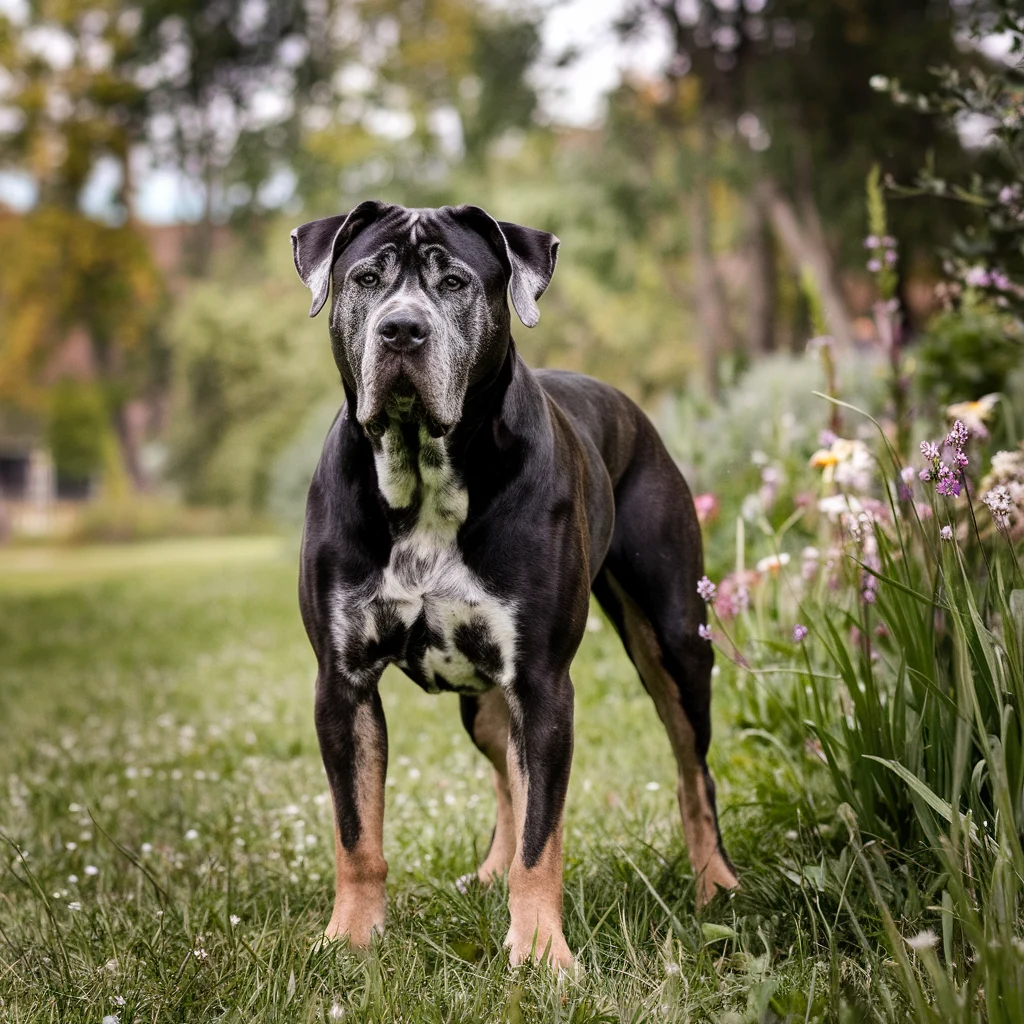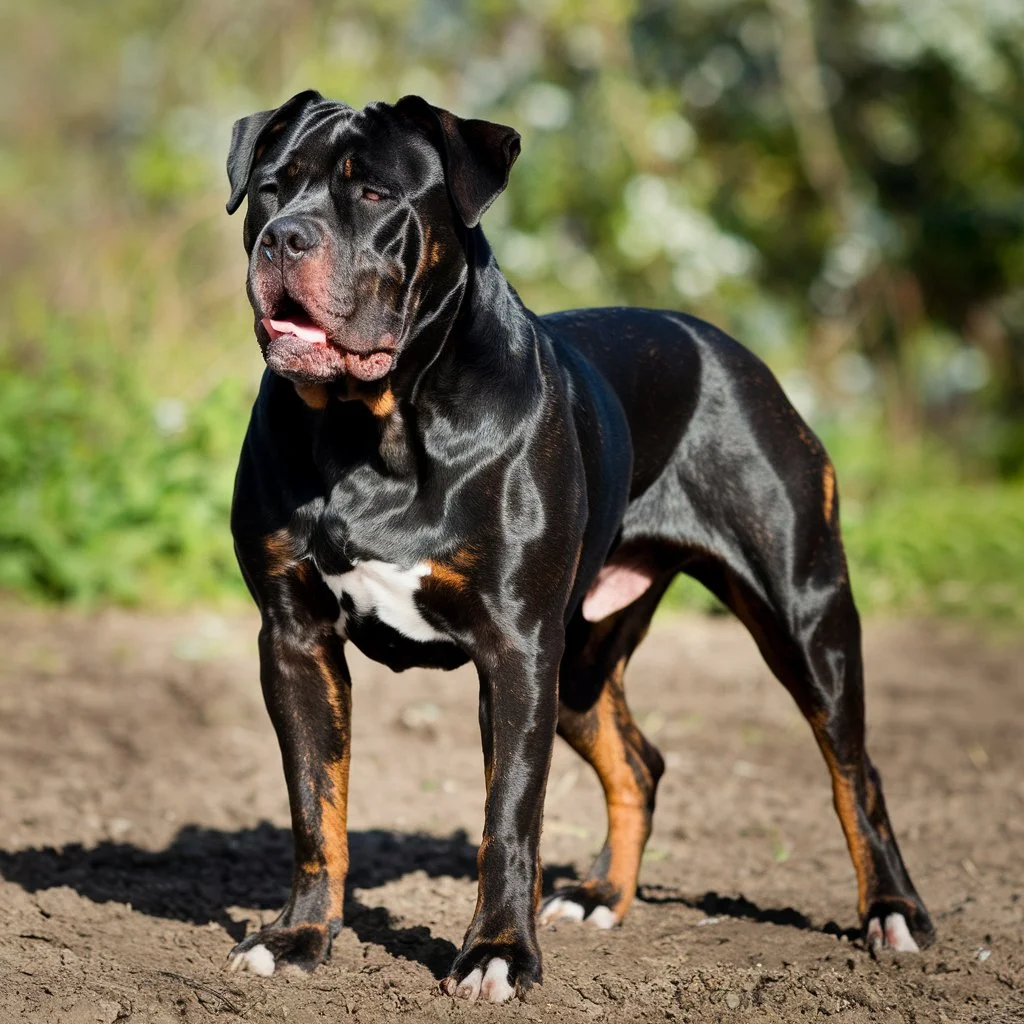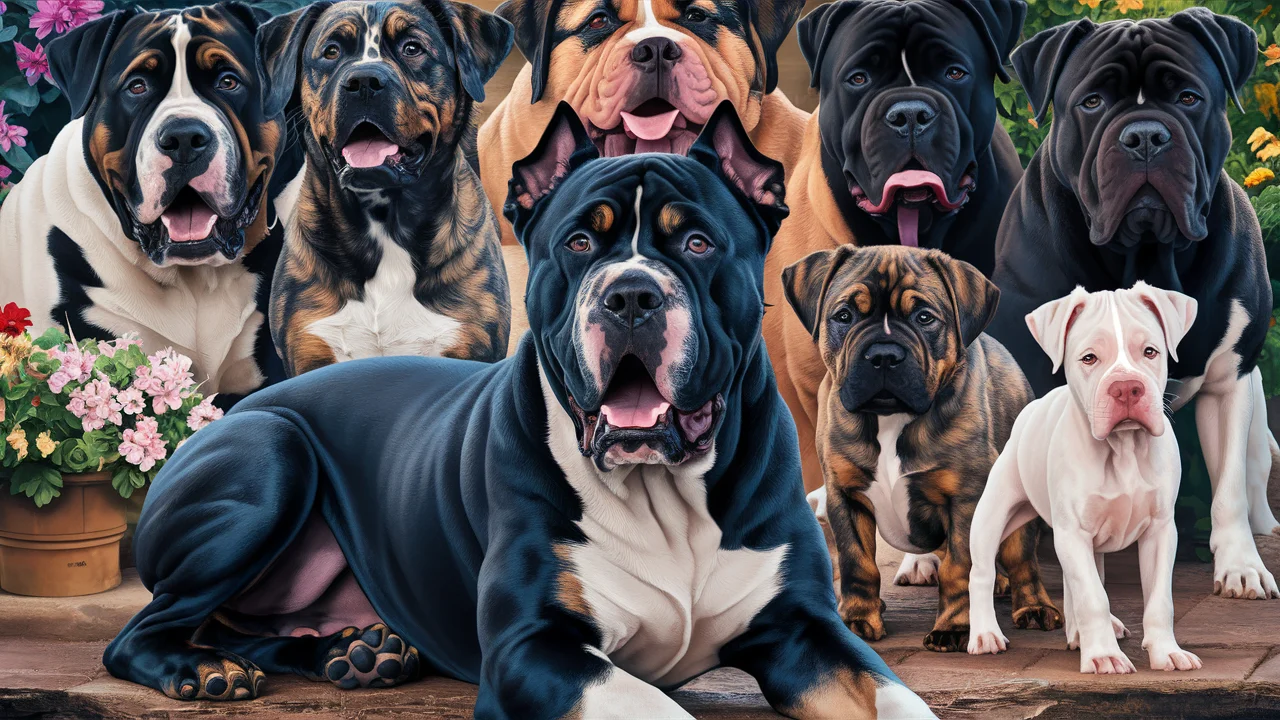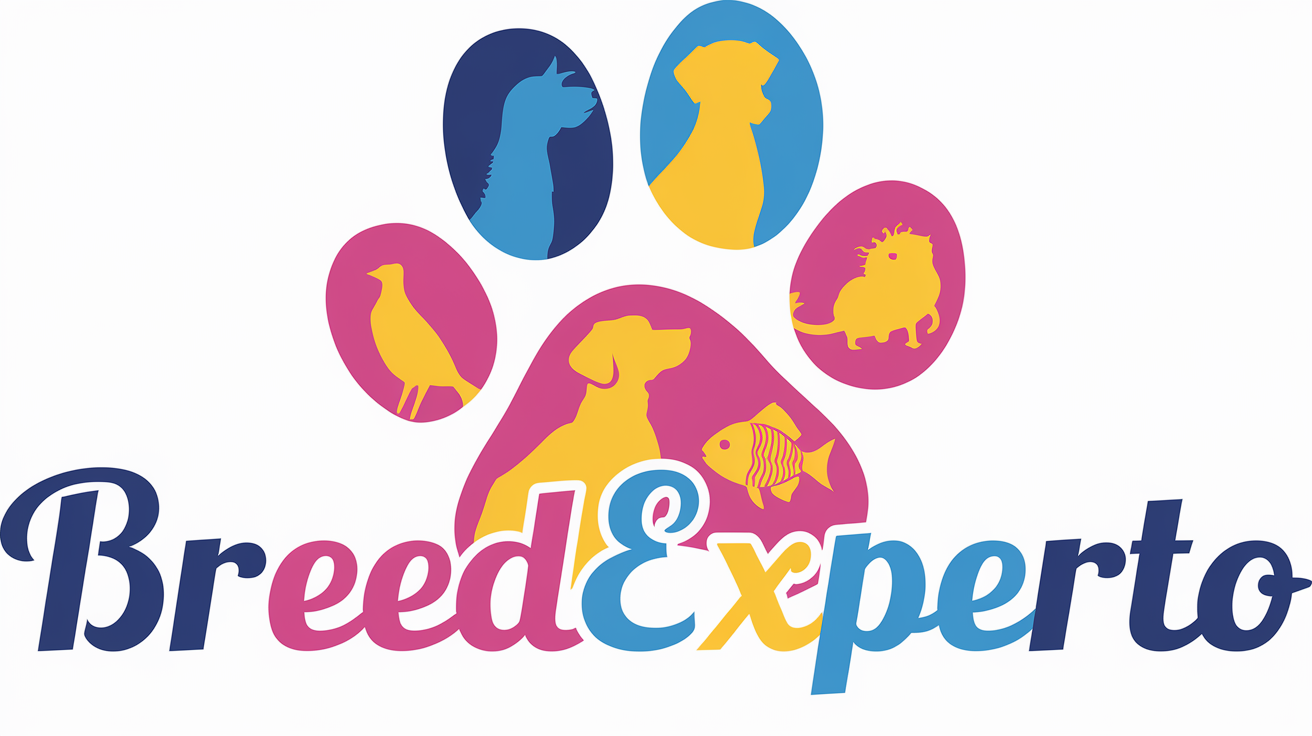The Cane Corso, an imposing breed with a rich history, is renowned for its strength, loyalty, and protective nature. However, what often captures the attention of potential owners and dog enthusiasts alike is the stunning variety of Cane Corso colors that exist within this breed.
While some colors are officially recognized, others remain elusive, making the Cane Corso a breed of both beauty and intrigue. In this article, we’ll explore the Cane Corso colors, both recognized and not, while delving into the genetic factors behind these variations, their health implications, and the cultural significance they carry.
Cane Corso Colors Recognized by the American Kennel Club (AKC)

The American Kennel Club recognizes several colors for the Cane Corso breed, each possessing unique traits that contribute to the breed’s overall appeal. Below is an in-depth look at the AKC-recognized colors:
Black Cane Corso
The Black Cane Corso is one of the most iconic color variations. Characterized by its solid black coat, this color exudes elegance and strength.
- Traits: Often seen as loyal and protective, black Cane Corsos are known for their confidence.
- Popularity: This color is among the most sought after due to its striking appearance.
Black Brindle Cane Corso
The Black Brindle Cane Corso features a black base with distinctive brindle stripes.
- Visual Appeal: The unique pattern creates a beautiful and exotic look that stands out.
- Personality: Owners often describe these dogs as intelligent and alert.
Gray Cane Corso
The Gray Cane Corso has gained popularity due to its sleek appearance. This color can range from light silver to deep charcoal.
- Traits: They are generally known for their calm demeanor, making them excellent family pets.
- Comparative Rarity: While gray is becoming more popular, it’s still less common than black.
Gray Brindle Cane Corso
With a similar pattern to the black brindle, the Gray Brindle Cane Corso presents a blend of gray tones interlaced with darker stripes.
- Distinctiveness: This combination gives them a unique appearance that attracts attention.
- Behavioral Aspects: They tend to be affectionate and loyal, making them good companions.
Red Cane Corso
The Red Cane Corso showcases a rich, warm color that can vary in intensity.
- Cultural Significance: In some cultures, red dogs are seen as symbols of strength and vitality.
- Owner Experiences: Many owners report that red Corsos have a vibrant personality.
Fawn Cane Corso
The Fawn Cane Corso exhibits a golden to tan coloration, often with a black mask.
- Personality Traits: Fawn Corsos are often described as affectionate and playful.
- Popularity: This color remains a favorite among many dog lovers for its classic look.
Chestnut Brindle Cane Corso
The Chestnut Brindle Cane Corso features a warm chestnut base with dark stripes.
- Visual Appeal: This striking combination is eye-catching and often turns heads.
- Behavioral Traits: They are generally confident and protective, making them great guardians.
Cane Corso Colors Not Recognized by the American Kennel Club

While the AKC recognizes several colors, many Cane Corso colors are not officially acknowledged. Here are some notable examples:
Formentino Cane Corso
The Formentino Cane Corso is a rare color variation that appears as a pale gray with a slight fawn tint.
- Genetic Background: This color is a result of specific breeding practices.
- Owner Insights: Many owners describe their Formentino Corsos as gentle and calm.
Liver/Chocolate Cane Corso
The Liver or Chocolate Cane Corso features a rich brown coat that is strikingly beautiful.
- Genetic Factors: This color arises from specific genetic combinations that influence pigmentation.
- Behavioral Traits: Chocolate Corsos are often described as friendly and sociable.
Blue Cane Corso
The Blue Cane Corso presents a steel-blue coat, which is quite rare and highly sought after.
- Rarity: The blue color comes from a dilution gene that impacts pigmentation.
- Health Considerations: Some blue Corsos may face health issues related to coat color genetics.
Isabella/Tawny Cane Corso
The Isabella/Tawny Cane Corso showcases a unique color that falls between fawn and gray, often appearing as a light tan.
- Distinctive Features: This color is distinguished by its lighter shades and subtle undertones.
- Market Demand: Tawny Corsos have become increasingly popular among enthusiasts.
Straw Cane Corso
The Straw Cane Corso displays a light yellow to cream color that is rarely seen.
- Visual Characteristics: This pale shade is often softer in appearance than the standard fawn.
- Cultural Perception: The uniqueness of this color can appeal to those looking for something different.
Albino Cane Corso
The Albino Cane Corso is characterized by a completely white coat with pink eyes.
- Health Risks: Albino dogs often face various health challenges, including vision and hearing impairments.
- Ethical Concerns: There are ongoing debates within the breeding community about the ethics of breeding for albinism.
The Rarest Cane Corso Color

Among all Cane Corso colors, the Formentino and Albino variations are considered the rarest. The rarity of these colors stems from their unique genetic combinations and the limited breeding practices that produce them.
- Community Insights: Many Cane Corso enthusiasts actively seek these rare colors, which can drive demand and prices up significantly.
- Ownership Experience: Owners of rare colors often find that their dogs attract attention and admiration.
Longevity of the Different Colored Cane Corso Dogs
One question many potential owners ask is whether a Cane Corso’s color affects its lifespan. Current research suggests that a dog’s health is influenced more by genetics, diet, and overall care than by its color.
- Lifespan Expectancy: Cane Corsos generally live between 9 to 12 years, regardless of their color.
- Health Considerations: Regular vet check-ups and a balanced diet can significantly impact their longevity.
Factors Influencing Longevity
| Factor | Description |
| Genetics | Inherited traits can predispose dogs to certain health conditions. |
| Diet | Proper nutrition is vital for maintaining overall health. |
| Exercise | Regular physical activity helps to keep dogs healthy and fit. |
| Veterinary Care | Routine check-ups can catch health issues early on. |
Reasons Behind Cane Corso’s Large Palette of Colors
The Cane Corso’s wide range of colors can be attributed to various genetic factors and breeding practices.
- Genetic Diversity: Breeders have selected for specific traits over generations, resulting in a rich variety of colors.
- Historical Influence: The breed’s origins trace back to ancient Rome, where they were bred for various purposes, influencing their color development.
Genetic Factors
- Pigmentation Genes: Various genes control the distribution and type of pigments in a dog’s coat, leading to color variations.
- Dilution Genes: Specific genes can dilute colors, leading to shades like blue and formentino.
Does the Cane Corso’s Color Affect Its Health?
While color itself does not directly determine a Cane Corso’s health, some variations may be linked to specific health concerns.
- Health Issues: Blue and albino dogs can be predisposed to certain health issues, such as skin conditions and vision problems.
- Breeding Ethics: Ethical breeding practices focus on the overall health and temperament of the dog, rather than solely on color.
Common Health Issues by Color
| Color | Potential Health Issues |
| Blue | Skin allergies, hip dysplasia |
| Albino | Vision problems, hearing impairments |
| Formentino | Generally healthy, but rare |
Importance of Color Choices in Cane Corso Ownership
Choosing a Cane Corso color goes beyond aesthetics; it can influence training, behavior, and even the dog’s compatibility with the owner’s lifestyle.
- Behavioral Traits: Some colors may be associated with certain personality traits, though individual variation is significant.
- Community Preferences: Some dog owners prefer specific colors due to personal connections or cultural significance.
Factors to Consider When Choosing Color
- Lifestyle Compatibility: Consider how the color might fit your living situation and lifestyle.
- Training and Socialization: Be aware that some colors may attract more attention, which can influence socialization and training experiences.
Conclusion
The Cane Corso is a magnificent breed, not just because of its strength and loyalty but also due to its remarkable array of colors. From the striking Black Brindle to the rare Albino, each color tells a unique story about the dog’s genetic heritage and character.
Understanding the implications of these colors—ranging from health considerations to cultural significance—can help potential owners make informed decisions when selecting their Cane Corso companion.
As you explore the vibrant world of Cane Corso colors, remember that the most important aspects of dog ownership are love, care, and commitment. Whether you prefer a classic black or a rare formentino, what truly matters is the bond you’ll share with your Cane Corso.
Feel free to share your experiences and thoughts on the various Cane Corso colors in the comments below!












